UnitV-OV2640
SKU:U078
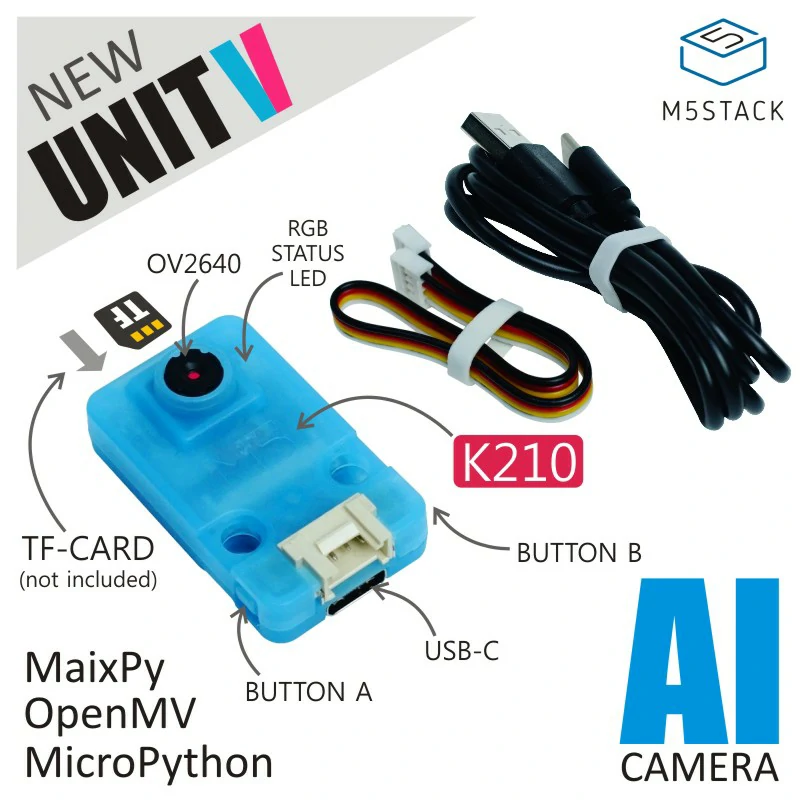
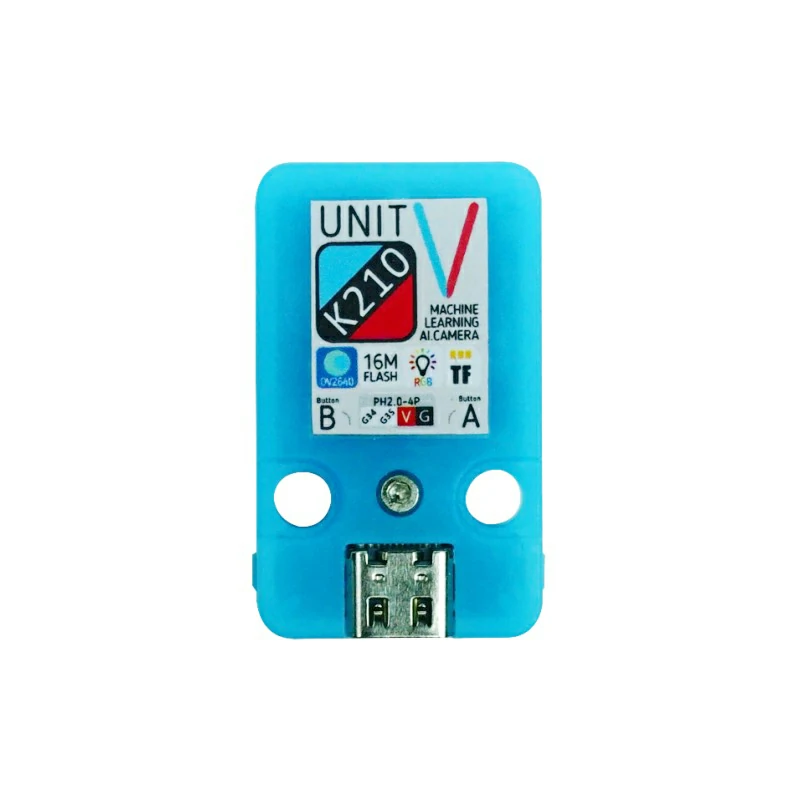
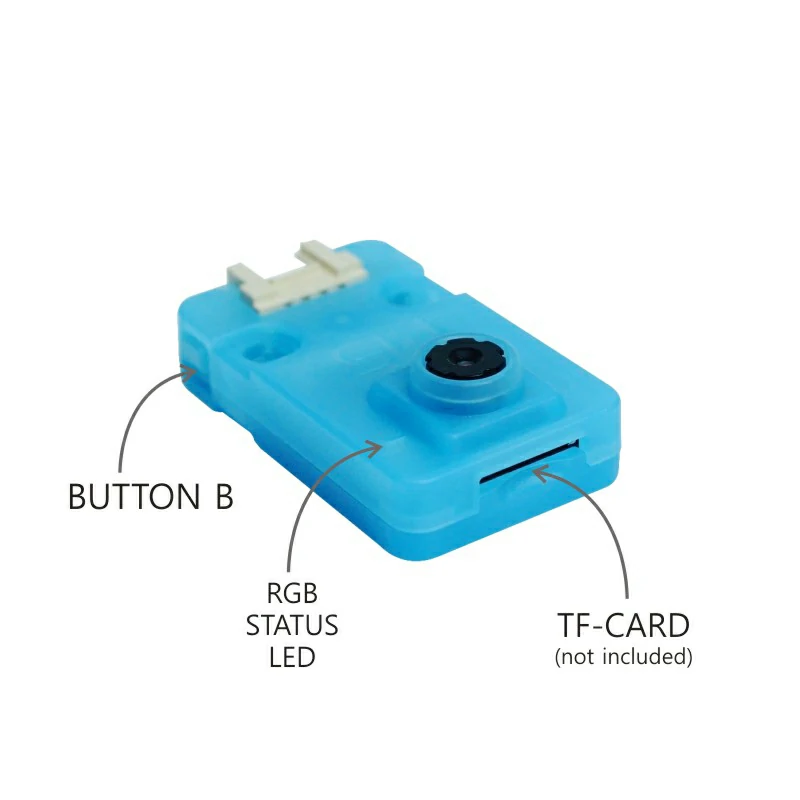



Description
UnitV-OV2640 is an AI vision processing camera unit equipped with the Kendryte K210, integrating a dual-core 64-bit RISC-V CPU and a neural network processor edge computing system-on-chip. The UnitV-OV2640 AI camera is very compact, making it suitable for embedding into various devices. It has machine vision processing capabilities, supports multiple image recognition functions (such as real-time acquisition of the size and coordinates of detected objects, and real-time acquisition of the types of detected objects), and can perform convolutional neural network calculations under low power consumption. Therefore, UnitV-OV2640 is an excellent zero-threshold machine vision embedded solution. It supports the MicroPython development environment, making your project development code more concise. Equipped with the OV2640 2-megapixel image sensor, it is an ideal choice for machine vision projects. The body features two programmable buttons and a front-facing RGB LED indicator for easy status display. The bottom provides a HY2.0-4P compatible interface and a TYPE-C interface for connecting to the main control device. It supports TF card expansion for easier access to related materials and model files.
Features
- Dual-core 64-bit RISC-V RV64IMAFDC (RV64GC) CPU / 400Mhz (Normal)
- Double-precision FPU
- 8MiB 64-bit on-chip SRAM
- Neural Network Processor (KPU) / 0.8Tops
- Programmable I/O Array (FPIOA)
- AES, SHA256 Accelerator
- Direct Memory Access Controller (DMAC)
- Supports MicroPython
- Firmware encryption support
- On-board hardware resources:
- Flash: 16M
- Camera: OV2640
- Buttons: 2
- Status LED: WS2812 LED
- Expansion card interface: TF card/microSD
- Interface: HY2.0/compatible GROVE
Includes
- 1 x UnitV-OV2640
- 1 x HY2.0-4P Grove cable (20cm)
- 1 x USB Type-C cable (1m)
Applications
- Object detection/classification
- Real-time acquisition of target size and coordinates
- Real-time acquisition of detected target types
- Shape recognition
- Video recording
Specifications
| Specification | Parameters |
|---|---|
| Kendryte K210 | Dual-core 64-bit RISC-V RV64IMAFDC (RV64GC) CPU / 400Mhz (Normal) |
| SRAM | 8Mbit |
| Flash | 16M |
| Input voltage | 5V @ 500mA |
| KPU Neural Network Size | 5.5MiB-5.9MiB |
| Interface | Type-C x 1, HY2.0-4P (I2C+I/O+UART) x 1 |
| RGB LED | WS2812 x 1 |
| Buttons | Custom buttons x 2 |
| Camera | OV2640 |
| FOV | 65° |
| External storage | TF Card/microSD |
| Net weight | 8g |
| Gross weight | 45g |
| Product Size | 40 x 24 x 13mm |
| Package Size | 70 x 50 x 30mm |
| Casing material | Plastic (PC) |
Learn
About KENDRYTE K210
Kendryte K210 is a system-on-chip (SoC) with integrated machine vision capabilities. Using TSMC's ultra-low-power 28nm advanced process, it features a dual-core 64-bit processor with excellent power efficiency, stability, and reliability. This solution aims for zero-threshold development, enabling rapid deployment in user products with AI applications.
- Equipped with machine vision capabilities
- Better low-power vision processing speed and accuracy
- Equipped with a convolutional neural network hardware accelerator KPU for high-performance convolutional neural network operations
- TSMC 28nm advanced process, temperature range -40°C to 125°C, stable and reliable
- Supports firmware encryption, difficult to crack using ordinary methods
- Unique programmable IO array, making product design more flexible
- Low voltage, lower power consumption compared to systems with the same processing power
- 3.3V/1.8V dual voltage support, no level conversion required, cost-saving
This product features a dual-core 64-bit high-performance low-power CPU based on RISC-V ISA, with the following characteristics:
- Core count: Dual-core processor
- Processor width: 64-bit CPU 400MHz
- Nominal frequency: 400MHz
- Instruction set extension: IMAFDC
- Floating-point unit (FPU): Double precision
- Platform interrupt management: PLIC
- Local interrupt management: CLINT
- Instruction cache: 32KiB x 2
- Data cache: 32KiB x 2
- On-chip SRAM: 8MiB
About OV2640
- Supported output formats (8-bit):
- YUV (422/420) /YCbCr422
- RGB565/555
- 8-bit compressed data
- 8-/10-bit Raw RGB data
- Scanning mode: Progressive
- Camera specifications:
- CCD size: 1/4 inch
- Field of view: 65°
- Maximum pixels: 2M
- Sensor optimal resolution: 1600 x 1200
SD Card Test
Unit V currently cannot recognize all types of microSD cards. We have tested some common microSD cards, and the results are as follows.
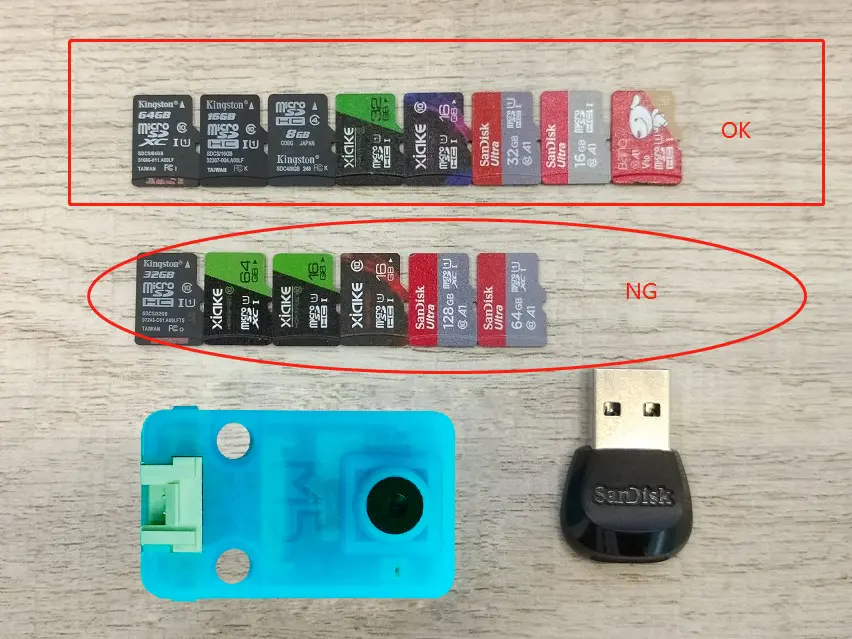
| Brand | Memory | Type | Transfer Speed | Partition Format | Test Result |
|---|---|---|---|---|---|
| Kingston | 8G | HC | Class4 | FAT32 | OK |
| Kingston | 16G | HC | Class10 | FAT32 | OK |
| Kingston | 32G | HC | Class10 | FAT32 | NO |
| Kingston | 64G | XC | Class10 | exFAT | OK |
| SanDisk | 16G | HC | Class10 | FAT32 | OK |
| SanDisk | 32G | HC | Class10 | FAT32 | OK |
| SanDisk | 64G | XC | Class10 | / | NO |
| SanDisk | 128G | XC | Class10 | / | NO |
| XIAKE | 16G | HC | Class10 | FAT32 | OK (Purple) |
| XIAKE | 32G | HC | Class10 | FAT32 | OK |
| XIAKE | 64G | XC | Class10 | / | NO |
| TURYE | 32G | HC | Class10 | / | NO |
PinMap
UnitV-OV2640
| UnitV | G8 | G19 | G18 | G34, G35 |
|---|---|---|---|---|
| Hardware | RGB LED | Button A | Button B | |
| HY2.0-4P | Interface |
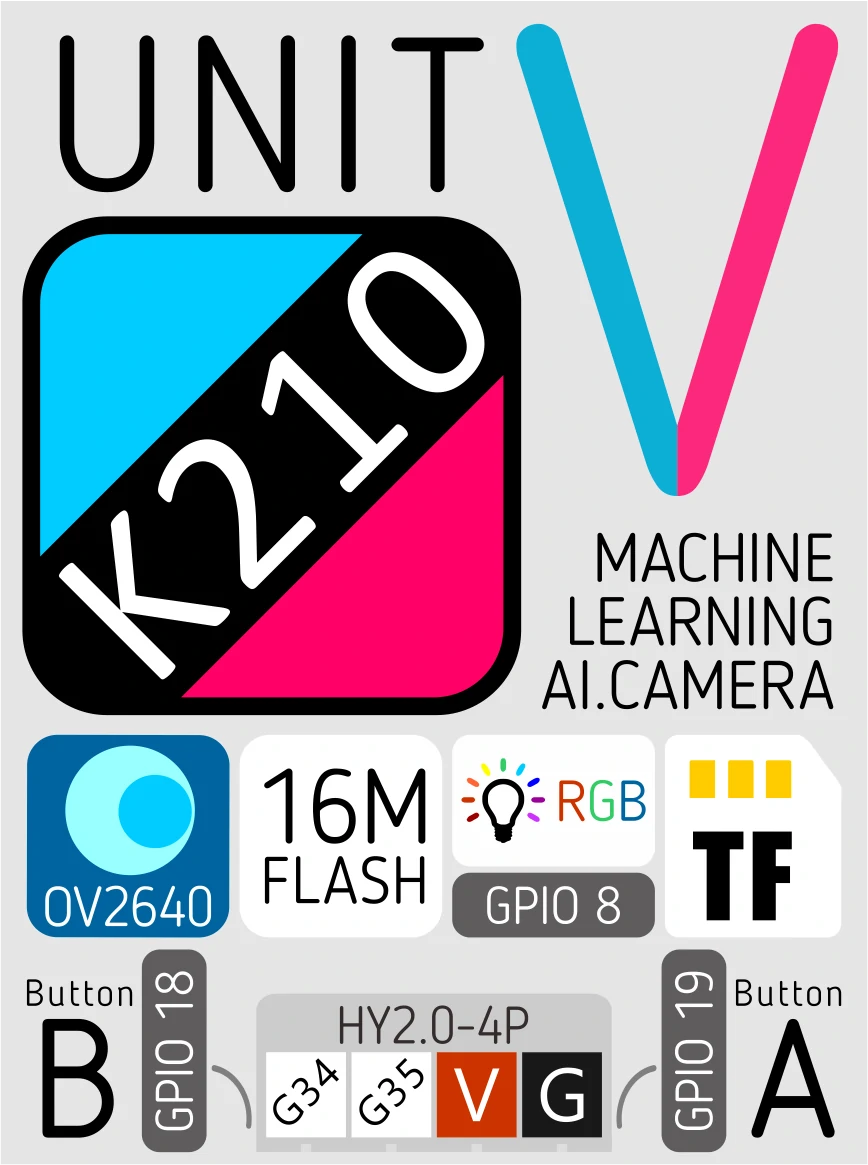
Model Size
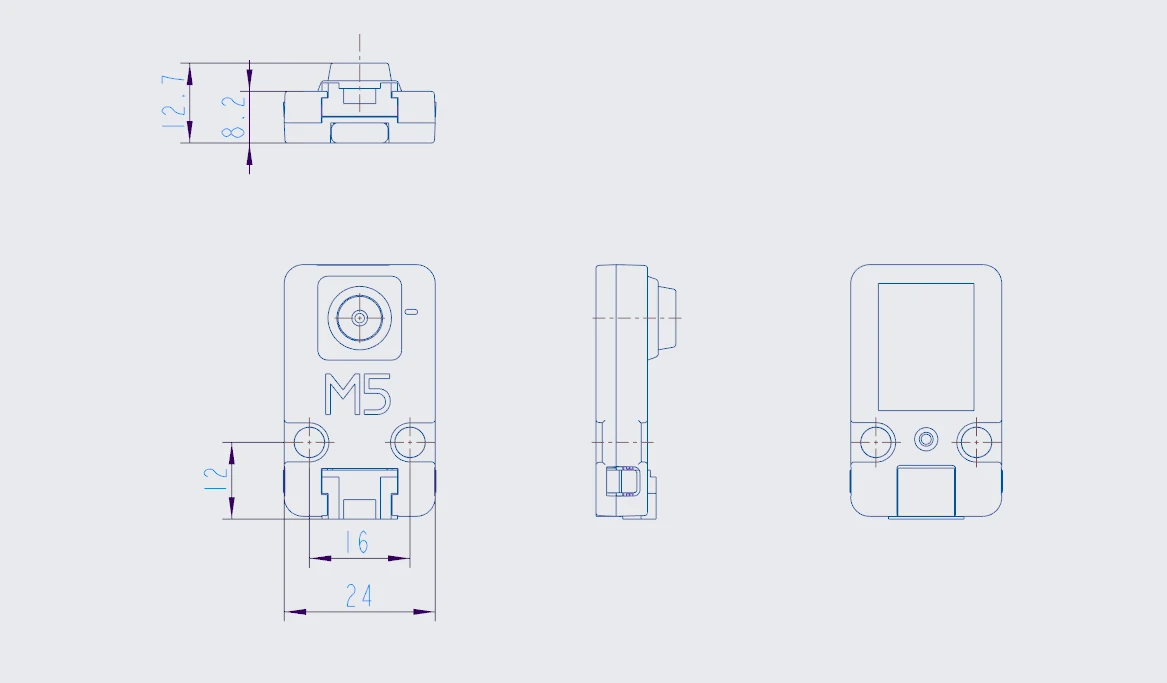
Datasheets
Softwares
Quick Start
Choose the development platform you want to use and check the corresponding tutorial & quick start.
UiFlow1
UiFlow2
- Coming soon...
USB Driver
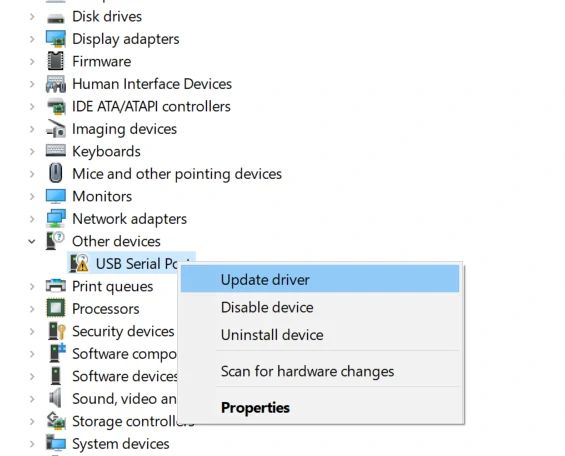
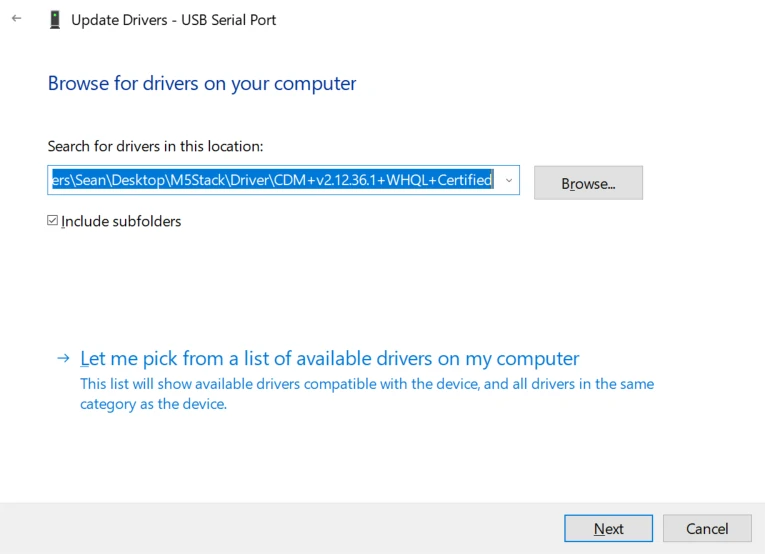
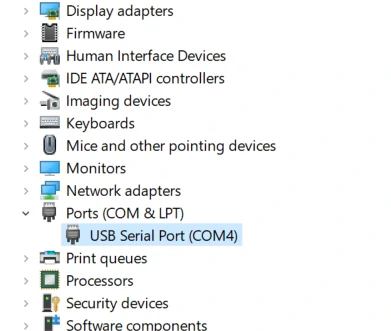
Other
Video
Product Comparison
To compare information on the UnitV series products, you can visit the Product Selection Table, check the target products, and get the comparison results. The selection table covers key information such as core parameters and functional features, and supports comparison of multiple products simultaneously.